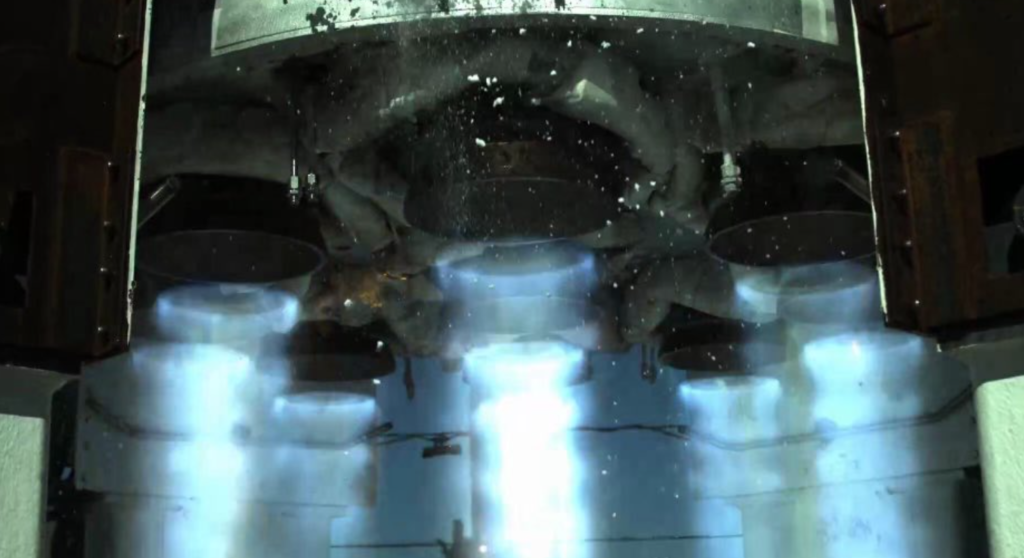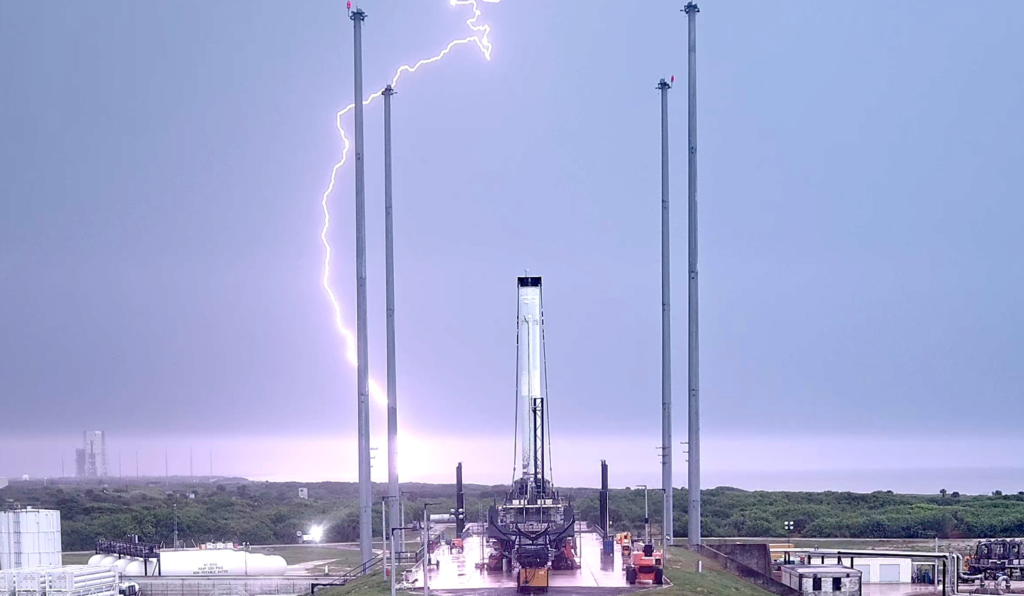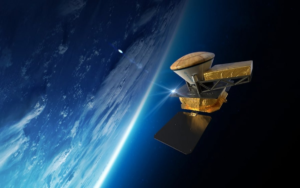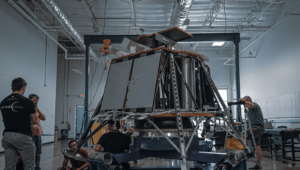
More Successful Tests As Relativity Closes In On Orbital Test Flight
The space industry has been full of exciting news from a large list of different companies and agencies. Relativity is a great example as the company continues to work at an impressive pace toward the first orbital test flight of Terran 1. This will easily be the biggest challenge yet for the company, however, it is bound to provide a lot of invaluable information.
Over the last few weeks, Relativity and CEO Tim Ellis have kept us updated on precisely what progress they have made. Not long ago we watched the company transport both stages to the launch complex. Since then, these same stages have completed multiple tests including spin start tests and much more. All of which leading up to the big day not long from now.
Relativity is trying to change the way rockets are manufactured. Using some of the world’s largest 3D printers, they have created the majority of Terran 1. This upcoming launch will put this style to the test along with the company’s plans for the future. Here I will go more in-depth into the recent updates from the company, what to expect in the near future, and more.
Recent Updates

A lot has been going on in recent weeks as the company continues to prepare for its biggest challenge yet. Starting earlier this month on the 12th, CEO Tim Ellis tweeted saying, “First ever model of Relativity rocket done by yours truly 6.5 years ago during our start at @ycombinator … almost as good as Hubble vs James Webb before/after photos.” Here you could see the first model compared to the impressive progress the company has made to today. A few days later on the 18th, Tim Ellis tweeted again this time mentioning, “Completed our first spin-start test operation today – meaningful step toward flight by our team!” Continuing with this pattern, 3 days later on the 21st he tweeted again pointing out, “Second spin-start test completed today on all 9 engines, full duration and successful test! Working up to longer duration next.”
Around the same time Relativity tweeted saying, “BTS of our stormy-sky, spin-start test operation this week – and some post-test. Getting closer to launching Terran 1, the first 3D printed rocket!” This included images of the mounted stage with lightning in the background. Only a few days ago the company had even more significant updates to share. Specifically, on the 25th Relativity tweeted mentioning, “Our most recent spin-start test with all 9 (entirely 3D printed) Aeon 1 engines on Stage 1. As one of the few liquid oxygen/liquid natural gas fueled rockets in the industry, Terran 1 is racing to be the 1st LOX/LNG rocket to fly.” This included a short video of the engine startup under the stage. The same day Tim Ellis chipped in as well with a tweet highlighting, “pretty sure this is where we say “ahhhh, that’s the stuff.”” This was in response to an engine hot fire which he provided a short video of.
Practically all of this news comes from the company’s launch complex. Specifically, back in 2019, Relativity announced that it had been granted a Right of Entry for its own rocket launch facilities at Launch Complex 16 (LC-16) at Cape Canaveral Air Force Station in Florida by The 45th Space Wing of the United States Air Force. The LC-16 launch facility was historically used for Titan missile launches, the Apollo moon program, the Gemini program, and Pershing missile launches. Launch infrastructure is in limited supply, and LC-16 is one of the few major launch facilities still available at Cape Canaveral. LC-16 is capable of supporting Relativity’s rocket, Terran 1, the first and only fully 3D printed rocket in the world, as well as the company’s future expansions in payload capacity, and comes with substantial existing infrastructure and operational history. Additionally, Relativity hired a team made up of former senior leadership personnel from top space companies, who have executed over 158 successful launches at Cape Canaveral. This combination will enable Relativity to more quickly build and operate a rocket launch facility.
Terran 1

Now that we know more about the progress Relativity is making, we can take a closer look at the rocket and expected launch date. Relativity is scheduled for its first launch of Terran 1, called “GLHF” (Good Luck, Have Fun), from Launch Complex 16 (LC-16) in Cape Canaveral in summer 2022. This launch of Terran 1 is the first orbital attempt by Relativity and will not include a customer payload. As a two-stage, 110ft. tall, 7.5 ft. wide, expendable rocket, Terran 1 is the largest 3D printed object to exist and to attempt orbital flight. Working towards its goal of being 95% 3D printed, Relativity’s first Terran 1 vehicle is 85% 3D printed by mass. Terran 1 has nine Aeon engines on its first stage, and one Aeon Vac on its second stage.
Like its structure, all Relativity engines are entirely 3D printed, and use liquid oxygen (LOX) and liquid natural gas (LNG), which are not only the best for rocket propulsion, but also for reusability, and the easiest to eventually transition to methane on Mars. As one of the few LOX/LNG fueled rockets in the industry, Terran 1 is racing to be the first LOX/LNG rocket to fly. In order to print such a big rocket, Relativity’s proprietary Factory of the Future centers on Stargate, the world’s largest metal 3D printers, that create Terran 1, and the first fully reusable, entirely 3D printed rocket, Terran R, from raw material to flight in 60 days. Relativity’s Stargate printers’ patented technology enables an entirely new value chain and innovative structural designs that make Terran 1 and Terran R possible. By developing its Factory of the Future and rockets together, Relativity accelerates its ability to improve design, production, quality, and speed.
Relativity often highlights that for around 60 years, aerospace manufacturing has relied on large factories, fixed tooling, complex supply chains, and extensive manual labor to build costly rockets comprised of 100,000 plus parts in 2 years or longer. In order to accelerate innovation in the industry, Relativity built its Factory of the Future, the first aerospace platform to automate rocket manufacturing, vertically integrating intelligent robotics, software, and data-driven 3D printing technology. Incorporating Stargate, the world’s largest metal 3D printer with AI-driven controls, this Factory of the Future attempts to continuously optimizes production, resulting in greatly compounded quality and time improvements, lower costs, and product designs previously not possible.
The Terran 1 vehicle is 35 m (115 ft) in height by 2.3 m (7.5 ft) in diameter and uses 10 Aeon engines: nine Aeon-1 engines on the first stage, and one Aeon Vacuum engine on the second stage. Relativity print all structures and major engine components using proprietary printable metal alloys, which leads to a dramatically simplified manufacturing process when compared to traditional fabrication methods. This will make it possible to shrink vehicle build and integration timelines down to just 60 days. The payload fairing leads its class in volume at 3 m (10 ft) diameter x 6.8 m (22.2 ft) with a 986 mm (38.81 in) standard payload interface. Terran 1’s fairing volume accommodates a variety of payload designs and configurations, including dedicated launch for single payloads and constellations as well as multi-manifest and rideshare configurations. Terran 1 is designed for a mission duration of up to 2.5 hours as a standard service. The design of Terran 1 provides a predictable and controlled launch environment allowing for simplified payload design requirements. Terran 1 can support both industry-standard and custom interfaces, using commercially available adapter and separation hardware in addition to mission-specific designs. Environmental control systems maintain clean, thermally controlled payload environments.
Most of the recent updates from Relativity have highlighted the first stage which is currently mounted at the launch site. Terran 1’s first stage assembly consists of three main components: the thrust structure, the Stage 1 tank, and the interstage. The tanks share a common dome and airframe that is integrally printed as monolithic sections, where a horizontal welding process integrates Stage 1 segments together to achieve the final stage structure. A transfer tube carries LOX through the center of the LNG tank to the engines. Nine Aeon-1 engines power the first stage with up to 23,000 pound force thrust per engine at sea level, for a total thrust of up to 207,000 pound force at liftoff. Terran 1 autogeneously pressurizes the tanks with gaseous natural gas and gaseous oxygen via heat exchangers integrated into the Aeon-1 engines, eliminating the need for a separate pressurization system and avoiding the use of helium on the vehicle entirely.
Conclusion
Relativity Space has been especially busy in recent months as some of the final preparations finish. In the last few days alone we have been updated with multiple engine fires, stage mounting, and more. All of which work towards the first orbital test flight expected to happen very soon. We will have to wait and see how it progresses and the impact it has on the space industry.



